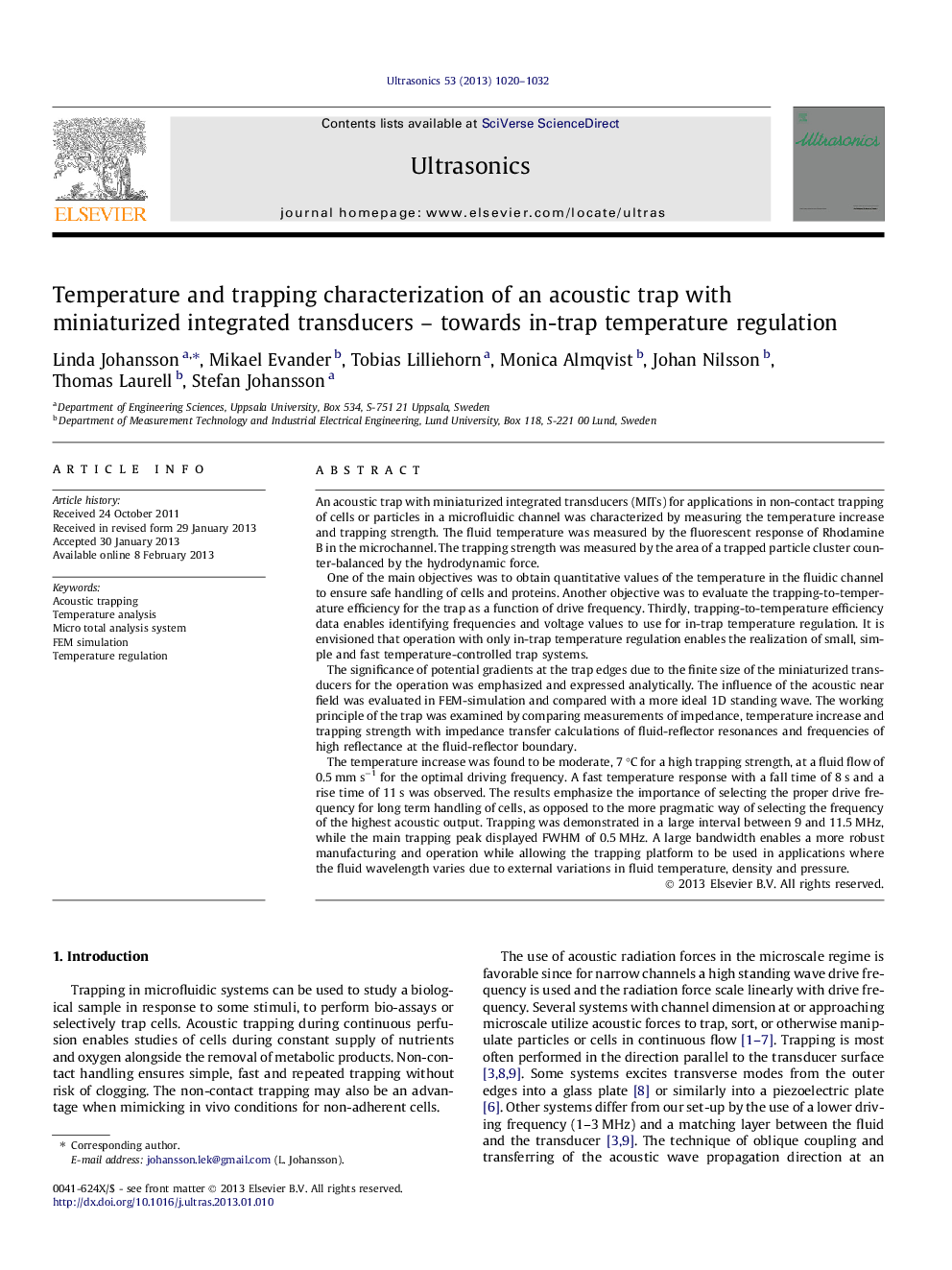| کد مقاله | کد نشریه | سال انتشار | مقاله انگلیسی | نسخه تمام متن |
|---|---|---|---|---|
| 1759200 | 1019269 | 2013 | 13 صفحه PDF | دانلود رایگان |

An acoustic trap with miniaturized integrated transducers (MITs) for applications in non-contact trapping of cells or particles in a microfluidic channel was characterized by measuring the temperature increase and trapping strength. The fluid temperature was measured by the fluorescent response of Rhodamine B in the microchannel. The trapping strength was measured by the area of a trapped particle cluster counter-balanced by the hydrodynamic force.One of the main objectives was to obtain quantitative values of the temperature in the fluidic channel to ensure safe handling of cells and proteins. Another objective was to evaluate the trapping-to-temperature efficiency for the trap as a function of drive frequency. Thirdly, trapping-to-temperature efficiency data enables identifying frequencies and voltage values to use for in-trap temperature regulation. It is envisioned that operation with only in-trap temperature regulation enables the realization of small, simple and fast temperature-controlled trap systems.The significance of potential gradients at the trap edges due to the finite size of the miniaturized transducers for the operation was emphasized and expressed analytically. The influence of the acoustic near field was evaluated in FEM-simulation and compared with a more ideal 1D standing wave. The working principle of the trap was examined by comparing measurements of impedance, temperature increase and trapping strength with impedance transfer calculations of fluid-reflector resonances and frequencies of high reflectance at the fluid-reflector boundary.The temperature increase was found to be moderate, 7 °C for a high trapping strength, at a fluid flow of 0.5 mm s−1 for the optimal driving frequency. A fast temperature response with a fall time of 8 s and a rise time of 11 s was observed. The results emphasize the importance of selecting the proper drive frequency for long term handling of cells, as opposed to the more pragmatic way of selecting the frequency of the highest acoustic output. Trapping was demonstrated in a large interval between 9 and 11.5 MHz, while the main trapping peak displayed FWHM of 0.5 MHz. A large bandwidth enables a more robust manufacturing and operation while allowing the trapping platform to be used in applications where the fluid wavelength varies due to external variations in fluid temperature, density and pressure.
► Acoustic trapping of cells and particles in microfluidic channel.
► Integrated miniaturized transducer.
► Fluorescent measurement of fluid temperature by Rhodamine B.
► Resonant mode analysis.
► FEM-simulation of the acoustic radiation force potential in the trapping region.
Journal: Ultrasonics - Volume 53, Issue 5, July 2013, Pages 1020–1032